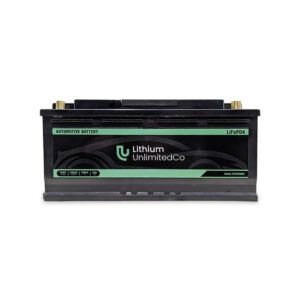NEWS & Blogs

How to Keep Your Snowmobile Battery Running All Winter
Operating within the complications of snowmobile and powersports batteries is essential for ensuring optimal performance and trustability. This companion compiles vital information on colorful aspects of these batteries, including replacement, maintenance tips, and different types similar to lithium versus lead-acid.
High-performance Snowmobile Batteries
Cold Cranking Amps( CCA): Snowmobile batteries need to start in extreme cold conditions. Look for batteries with high CCA conditions to ensure dependable thresholds indeed in sub-zero temperatures.
Maintenance-Free Design: Opt for conservation-free batteries to avoid the hassle of checking electrolyte levels and adding water. Sealed batteries are preferable for snowmobiles as they’re less prone to leaks and tumbles.
Vibration Resistance: Snowmobiles operate in rough terrain, so choose a battery that can repel climate without compromising performance or life.
Continuity: Invest in a battery with robust construction to endure harsh downtime conditions and repel damage from impacts or rough running.
Weight: Snowmobile performance can be affected by redundant weight. Select a lightweight battery that provides high power without adding gratuitous bulk.
Brand Reputation: Choose batteries from estimable brands known for their quality and trustability. Research client reviews and expert opinions to gauge the reputation of different battery brands.
Warranty: Consider the warranty offered by the manufacturer. A longer warranty period indicates the manufacturer’s confidence in their product’s continuity and performance.
Compatibility: Ensure that the battery is compatible with your snowmobile’s make and model. Check the specifications provided by the manufacturer to avoid compatibility issues.

Snowmobile Battery Maintenance Tips
Maintaining your snowmobile battery properly is crucial for ensuring dependable performance, especially during cold downtime months. Then are some essential conservation tips:Regular examination: Check the battery regularly for any signs of damage, erosion, or leakage. Look for cracks in the covering, loose outstations, or any other visible issues.
Clean Outstations: Clean the battery outstations and cable connections regularly to remove erosion and ensure good electrical contact. Use an admixture of baking soda and water to clean erosion, and a wire brush to scrub the outstations gently.
Keep it Charged: Charge the battery completely before storing your snowmobile for the off-season. A completely charged battery is less likely to indurate and will maintain its charge longer.
Use a Battery Tender: If you are storing your snowmobile for an extended period, consider using a battery tender or maintainer to keep the battery charged.
This will prevent it from losing its charge and protract its lifetime.
Avoid Overcharging: Overcharging can damage the battery, so make sure not to leave it connected to a charger for longer than necessary.
Follow the manufacturer’s instructions for charging times and procedures.
Cover from Cold: Extreme cold can reduce a battery’s capacity and make it harder to start your snowmobile. Park your snowmobile in a garage or use a battery mask or sequestration to protect the battery from indurating temperatures.
Check Electrolyte Levels( for non-sealed batteries): If you have a traditional swamped lead-acid battery, check the electrolyte levels regularly and top them up with distilled water if necessary. Be careful not to overfill.
Replace when Necessary: If your battery is old or showing signs of deterioration despite proper maintenance, it may be time to replace it. Do not wait until it fails fully, as this could leave you stranded in the snow.
Snowmobile Battery Charging Instructions
Safety preventives
- Ensure that the snowmobile’s machine is turned off before attempting to charge the battery.
- Work in a well-voiced area down from any sparks or open dears.
- Wear defensive eyewear and gloves to prevent exposure to battery acid or erosion.
Select a Charger
- Use a charger specifically designed for charging lead-acid batteries. Avoid using automotive battery dishes with high amperage labor, as they may damage the snowmobile battery.
- If possible, use a smart bowl or maintainer with automatic shut-off capabilities to help overcharging, If possible.
Prepare the Battery
- Disconnect the battery lines, starting with the negative( black) terminal, also the positive( red) terminal.
- Remove the battery from the snowmobile if necessary, following the manufacturer’s instructions.
Check the Battery
- Check the battery for any signs of damage, erosion, or leakage. Clean the terminals and cable connections if demanded using a wire encounter and an admixture of incinerating soda and water.
Connect the Charger
- Connect the charger’s positive( red) clamp to the positive terminal of the battery.
- Connect the charger’s negative( black) clamp to a clean, uncolored metal face on the snowmobile’s frame. Avoid connecting it directly to the negative terminal of the battery to help sparking.
Set Charging Parameters
- Follow the manufacturer’s instructions for setting the charging voltage and current according to the type and size of the battery.
- If so, simply connect it to the battery and let it automatically descry and apply the applicable charging parameters, If using a smart charger.
Charge the Battery
- Start the charging process according to the charger’s instructions. Cover the battery nearly during charging to ensure it doesn’t heat.
- Charge the battery at a slow rate to help overheating and minimize the threat of damaging the battery.
Examiner Charging Progress
- Keep an eye on the battery during the charging process. However, sparking, or unusual odors, If you notice any signs of overheating.
Complete Charging
- Once the battery is completely charged, disconnect the charger from the battery outstations in the rear order negative( black) clamp first, also positive( red) clamp.
- Reinstall the battery in the snowmobile and reconnect the battery lines, starting with the positive( red) terminal, also the negative( black) terminal.
Conclusion
Recent Posts
-
The Ultimate Guide to Choosing Lithium Batteries for Your Electric Vehicle
-
From Zero to Hero: The Impact of Lithium Powersports Batteries on Performance
-
Wake Up to the Power of Lithium: Transform Your Boat's Performance Today
-
Why Choose LFP Over AGM for Safety? How and Why
-
Why Lithium Golf Cart Batteries are a Game Changer for Sports Enthusiasts

